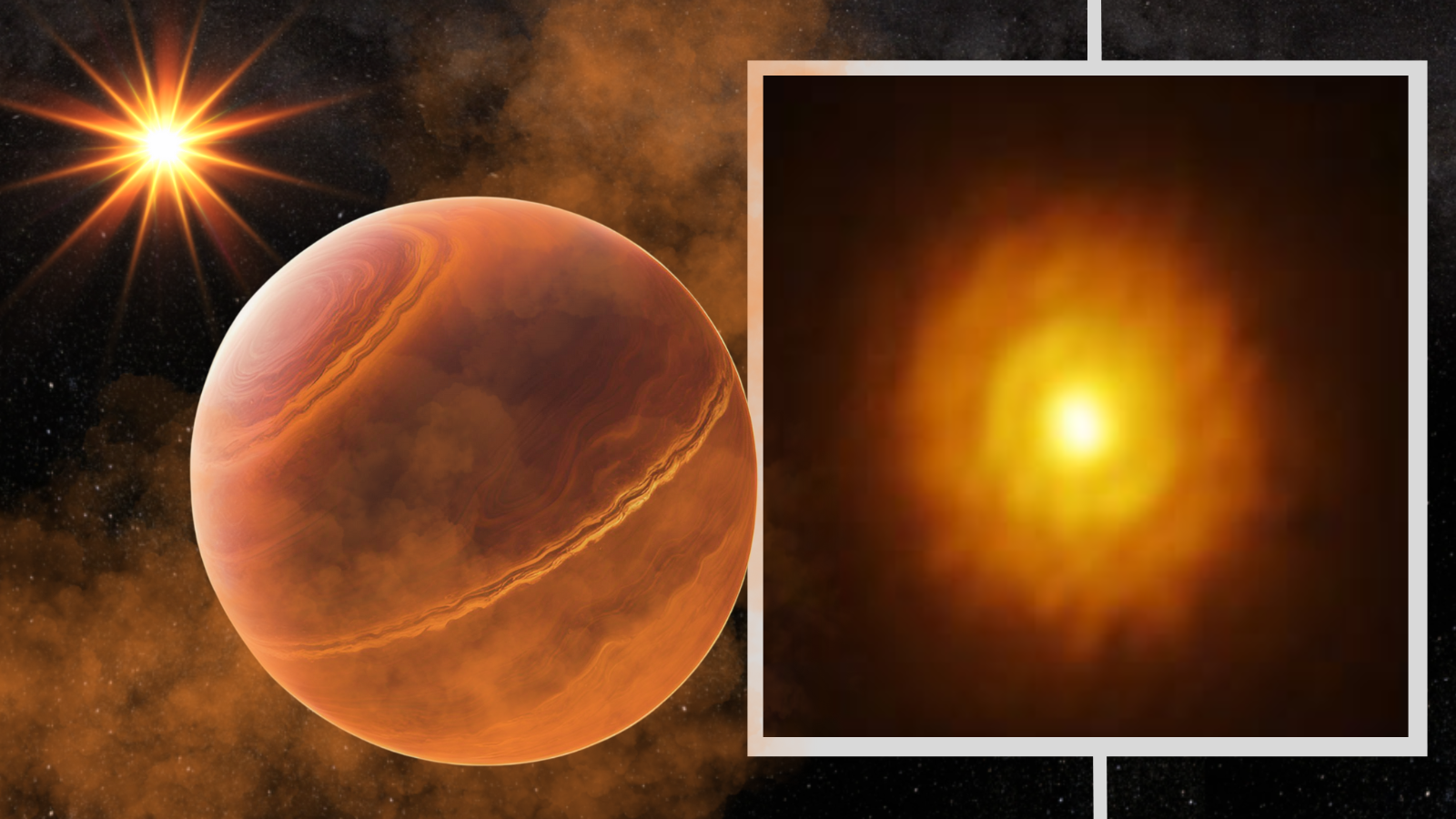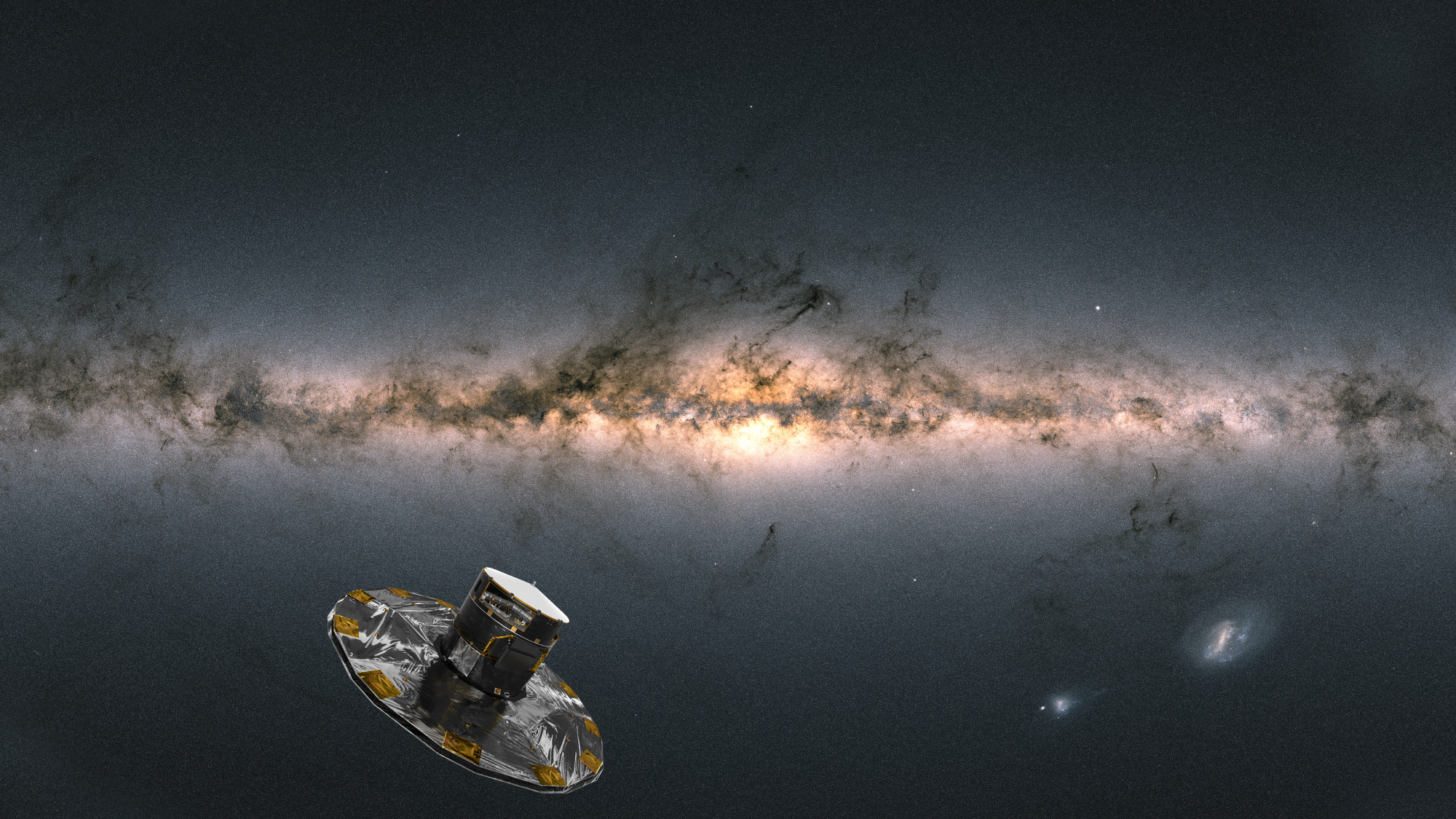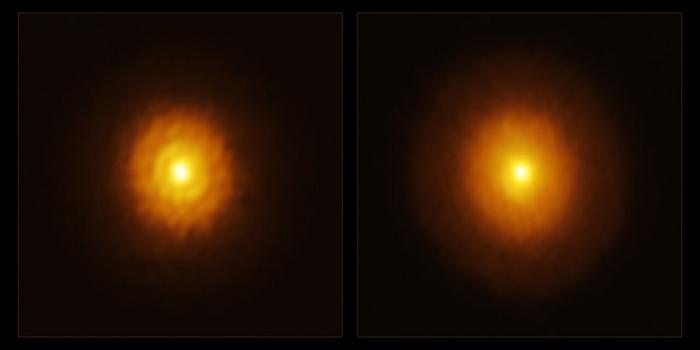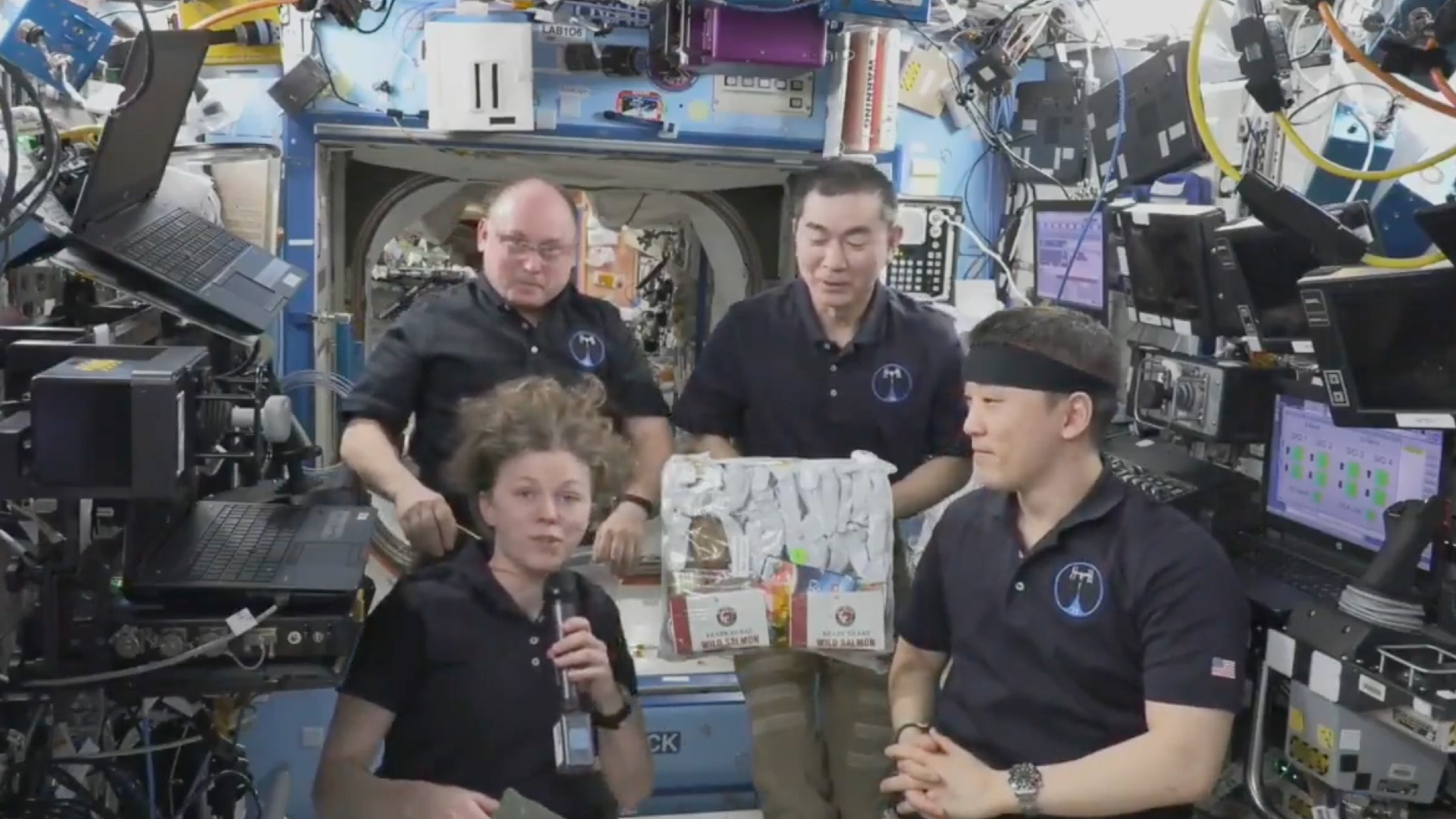Astronomers discover monster exoplanet hiding in 'stellar fog' around young star
The massive world couldn't hide from the telescope tag team of Gaia and ALMA.

Astronomers have spotted a monster-sized planet that could be up to ten times the size of Jupiter emerging from the stellar fog surrounding a young star.
Prior observations of the roughly 13 million-year-old star MP Mus (also known as PDS 66) located around 280 light-years away had failed to distinguish features in the swirling cloud of gas and dust, or protoplanetary disk, that surrounds it.
However, when astronomers reexamined the apparently featureless protoplanetary disk of this star using combined data from the Atacama Large Millimeter/submillimeter Array (ALMA) and the European Space Agency (ESA) Gaia mission, they found it may not be quite so lonely after all.
The team detected a huge gas giant dwelling in the protoplanetary disk of MP Mus, which had been previously hidden. This represents the first time Gaia has spotted an extrasolar planet or "exoplanet" sitting in a protoplanetary disk, the disks of material around young stars that birth planets.
Such detections have typically been tough due to interference from the gas and dust of the protoplanetary disk. Until now, astronomers have only made three strong detections of planets within protoplanetary disks.
This new finding could help astronomers hunt more recently formed planets around infant stars.
Young exoplanets get into the groove
Planets form within protoplanetary disks through a process called core accretion, when larger and larger particles stick together via gravity, forming planetesimals, asteroids, and eventually planets.
Breaking space news, the latest updates on rocket launches, skywatching events and more!
As material from the protoplanetary disk is swallowed up by this process, the planets created begin to carve channels in the disk, akin to the grooves in a vinyl record.
When this team initially observed the protoplanetary disk around MP Mus in 2023 with ALMA, these were the kind of structures they had expected to see. Structures that were missing.
"We first observed this star at the time when we learned that most discs have rings and gaps, and I was hoping to find features around MP Mus that could hint at the presence of a planet or planets," team leader Álvaro Ribas from Cambridge's Institute of Astronomy said in a statement.
What the team found instead was a seemingly lonely star surrounded by a featureless disk of gas and dust that had none of the hallmarks of forming planets.
"Our earlier observations showed a boring, flat disc," Ribas said. "But this seemed odd to us, since the disc is between seven and ten million years old.
"In a disc of that age, we would expect to see some evidence of planet formation."
With their curiosity piqued, the team set about relooking at MP Mus again using ALMA, but in longer wavelengths of light. This allowed them to probe deeper into the disk, revealing a cavity in the disk close to the young star and two further "holes" further out, all of which were absent in the prior observations.
Further evidence of a planetary companion to MP Mus was about to be delivered.
More than just a first for Gaia
As Ribas and colleagues were examining MP Mus with ALMA, European Southern Observatory (ESO) researcher Miguel Vioque was looking at the young star using the now-retired star tracking spacecraft Gaia.
What Vioque discovered was that this young star is "wobbling." This is something that would usually be the effect of a planet in orbit gravitationally tugging on a star, but Vioque was aware that MP Mus' protoplanetary disk had, until that point, come up empty in terms of planets.
"My first reaction was that I must have made a mistake in my calculations, because MP Mus was known to have a featureless disc," Vioque explained. "I was revising my calculations when I saw Álvaro give a talk presenting preliminary results of a newly-discovered inner cavity in the disc, which meant the wobbling I was detecting was real and had a good chance of being caused by a forming planet."

The researchers came together, combining the Gaia and ALMA data with some computer modeling assistance to determine that the wobbling is likely caused by a gas giant with a mass between three and ten times that of Jupiter.
This giant planet appears to orbit MP Mus at a distance of between one and three times the distance between Earth and the sun.
"Our modelling work showed that if you put a giant planet inside the newfound cavity, you can also explain the Gaia signal," Ribas said. "And using the longer ALMA wavelengths allowed us to see structures we couldn’t see before."
As well as being the first time Gaia has spotted a planet within a protoplanetary disk, this is the first time an embedded exoplanet has been indirectly discovered by combining precise star movement data from Gaia with deep observations of the disk courtesy of ALMA.
"We think this might be one of the reasons why it's hard to detect young planets in protoplanetary discs, because in this case, we needed the ALMA and Gaia data together," said Ribas. "The longer ALMA wavelength is incredibly useful, but to observe at this wavelength requires more time on the telescope."
Ribas is hopeful that future ALMA upgrades, in addition to forthcoming telescopes, could be used to probe even deeper into protoplanetary disks.
This would not only reveal a hitherto undiscovered population of young embedded exoplanets, but it could help us understand how the solar system came to be around 4.5 billion years ago.
The team's research was published on Monday (July 14) in the journal Nature Astronomy.

Robert Lea is a science journalist in the U.K. whose articles have been published in Physics World, New Scientist, Astronomy Magazine, All About Space, Newsweek and ZME Science. He also writes about science communication for Elsevier and the European Journal of Physics. Rob holds a bachelor of science degree in physics and astronomy from the U.K.’s Open University. Follow him on Twitter @sciencef1rst.
You must confirm your public display name before commenting
Please logout and then login again, you will then be prompted to enter your display name.

